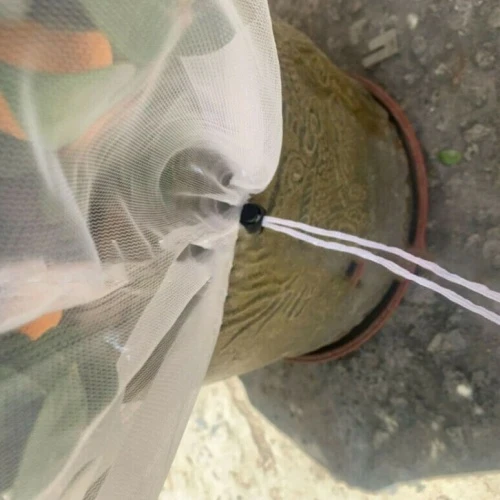-
 Afrikaans
Afrikaans -
 Albanian
Albanian -
 Amharic
Amharic -
 Arabic
Arabic -
 Armenian
Armenian -
 Azerbaijani
Azerbaijani -
 Basque
Basque -
 Belarusian
Belarusian -
 Bengali
Bengali -
 Bosnian
Bosnian -
 Bulgarian
Bulgarian -
 Catalan
Catalan -
 Cebuano
Cebuano -
 China
China -
 Corsican
Corsican -
 Croatian
Croatian -
 Czech
Czech -
 Danish
Danish -
 Dutch
Dutch -
 English
English -
 Esperanto
Esperanto -
 Estonian
Estonian -
 Finnish
Finnish -
 French
French -
 Frisian
Frisian -
 Galician
Galician -
 Georgian
Georgian -
 German
German -
 Greek
Greek -
 Gujarati
Gujarati -
 Haitian Creole
Haitian Creole -
 hausa
hausa -
 hawaiian
hawaiian -
 Hebrew
Hebrew -
 Hindi
Hindi -
 Miao
Miao -
 Hungarian
Hungarian -
 Icelandic
Icelandic -
 igbo
igbo -
 Indonesian
Indonesian -
 irish
irish -
 Italian
Italian -
 Japanese
Japanese -
 Javanese
Javanese -
 Kannada
Kannada -
 kazakh
kazakh -
 Khmer
Khmer -
 Rwandese
Rwandese -
 Korean
Korean -
 Kurdish
Kurdish -
 Kyrgyz
Kyrgyz -
 Lao
Lao -
 Latin
Latin -
 Latvian
Latvian -
 Lithuanian
Lithuanian -
 Luxembourgish
Luxembourgish -
 Macedonian
Macedonian -
 Malgashi
Malgashi -
 Malay
Malay -
 Malayalam
Malayalam -
 Maltese
Maltese -
 Maori
Maori -
 Marathi
Marathi -
 Mongolian
Mongolian -
 Myanmar
Myanmar -
 Nepali
Nepali -
 Norwegian
Norwegian -
 Norwegian
Norwegian -
 Occitan
Occitan -
 Pashto
Pashto -
 Persian
Persian -
 Polish
Polish -
 Portuguese
Portuguese -
 Punjabi
Punjabi -
 Romanian
Romanian -
 Russian
Russian -
 Samoan
Samoan -
 Scottish Gaelic
Scottish Gaelic -
 Serbian
Serbian -
 Sesotho
Sesotho -
 Shona
Shona -
 Sindhi
Sindhi -
 Sinhala
Sinhala -
 Slovak
Slovak -
 Slovenian
Slovenian -
 Somali
Somali -
 Spanish
Spanish -
 Sundanese
Sundanese -
 Swahili
Swahili -
 Swedish
Swedish -
 Tagalog
Tagalog -
 Tajik
Tajik -
 Tamil
Tamil -
 Tatar
Tatar -
 Telugu
Telugu -
 Thai
Thai -
 Turkish
Turkish -
 Turkmen
Turkmen -
 Ukrainian
Ukrainian -
 Urdu
Urdu -
 Uighur
Uighur -
 Uzbek
Uzbek -
 Vietnamese
Vietnamese -
 Welsh
Welsh -
 Bantu
Bantu -
 Yiddish
Yiddish -
 Yoruba
Yoruba -
 Zulu
Zulu
Welded Steel Wire Mesh Applications and Benefits in Construction and Engineering Projects
Welded Steel Wire Fabric A Reliable Choice for Construction
Welded steel wire fabric (WSWF) is an essential component in modern construction and engineering applications. This versatile and robust material is composed of a series of longitudinal and transverse steel wires that are welded together at intersections. The result is a grid-like structure that provides unmatched strength and stability, making it an ideal choice for various building projects.
One of the significant advantages of welded steel wire fabric is its ability to distribute loads evenly across a surface. This characteristic makes it particularly useful in reinforcing concrete slabs, walls, and other structural elements. By integrating WSWF into construction designs, engineers can enhance the overall structural integrity of a building, reducing the risk of cracks and failures over time.
In addition to its strength, welded steel wire fabric is also known for its versatility. It can be manufactured in different sizes, shapes, and wire diameters, allowing for customization based on specific project requirements. Whether for residential, commercial, or industrial applications, WSWF can be tailored to meet the unique demands of any construction endeavor. Its adaptability makes it a favored choice among architects and builders alike, as it can be easily incorporated into various design elements.
welded steel wire fabric

Another compelling aspect of welded steel wire fabric is its cost-effectiveness. Compared to other reinforcement methods, such as rebar, WSWF can often be more economical while still providing superior structural support. The efficiency of its production and the ease of installation further contribute to cost savings for construction projects. This makes it an attractive option for builders looking to optimize their budgets without compromising quality.
Furthermore, welded steel wire fabric is environmentally friendly. The production process typically utilizes recyclable steel, making it a sustainable choice in the construction industry. As environmental concerns continue to grow, the use of WSWF aligns with the shift towards greener construction practices.
However, it is essential to consider proper installation techniques and compliance with local building codes when using welded steel wire fabric. Improper handling or installation can negate its benefits, leading to potential structural issues in the future. Therefore, contracting experienced professionals who understand the nuances of WSWF application is critical for achieving the desired results.
In conclusion, welded steel wire fabric stands out as a reliable and efficient option in the construction sector. Its combination of strength, versatility, cost-effectiveness, and environmental sustainability makes it a go-to material for engineers and builders. As the demand for durable and resilient structures continues to rise, the role of WSWF in shaping the future of construction will undoubtedly become more significant, solidifying its position in the industry.
-
Shipping Plastic Bags for Every NeedNewsJul.24,2025
-
Safety Netting: Your Shield in ConstructionNewsJul.24,2025
-
Plastic Mesh Netting for Everyday UseNewsJul.24,2025
-
Nylon Netting for Every UseNewsJul.24,2025
-
Mesh Breeder Box for Fish TanksNewsJul.24,2025
-
Expanded Steel Mesh Offers Durable VersatilityNewsJul.24,2025











